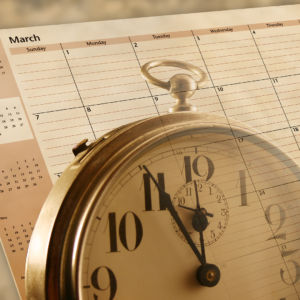It was a moment that has come back to me many times. I had gone to Starbucks in my hometown of Denver. Before going to visit my ailing mom, I thought a coffee would be nice. Once I was at the counter, the barista serving me asked, “And how are you today?” He looked like he actually wanted an answer. Living in Boston, I was unaccustomed to such congeniality.
I replied, “Fine thank you,” as he continued to look at me. Then I realized I needed to return the question. “And how are you?” I awkwardly asked. He gave much more of a reply than I had offered. I took from this that he had time and interest in connecting. It was a “wow” moment.
I’ve had many Groundhog Day experiences that hearken to that moment. When I call my husband at work, I usually start with, “Do you have two minutes?” He does the same to me, and yes, we always find the two minutes or more. But why do we ask, and why the 2-minute constraint?
In a recent client study, I asked people to identify their biggest pain point in the context of work. The response was a resounding “Lack of time,” and “Can’t keep up with the workload.” In prior studies, I’d frequently hear about technology deficiencies or processes that haven’t kept up or changing market dynamics. Not this time. Nope, it was all about wanting more time.
And just as I was certain I finally landed a respondent who identified technology as her pain point, I then heard, “The problem isn’t the technology. It’s that it requires a conversation.” I chuckled. We were back to the issue of time.
Maybe due to COVID, our world recognizes that one of our most precious gifts is that of time. It shouldn’t be that surprising. Most of us have spent two years purging old belongings. We realize that we need less, which is good since inflation and the great resignation have drained our pockets.
Still, pivoting to valuing the gift of time is not easy. This means making time for a cup of coffee with Aunt Louise, or talking to your chatty neighbor when you had in mind an efficient walk with the dog. It means engaging in real conversation about things that matter when you’d rather have small talk. Or starting a phone call that doesn’t begin with, “Do you have two minutes?”
I have been working on building this “gift-of-time” skill at multiple places in my life. A woman at the grocery store asked me which apples I’d recommend for a pie. I’m not sure why she asked me, and I could have said that I don’t know, which is not far from the truth. Instead, I replied, “I use granny smiths and sometimes I throw in a macintosh, but I have no idea whether it’s right.” We talked for the next three or four minutes. Maybe she cared less about the apples and more about human interaction. No matter because I happily gave it. Now, when neighbors walk by, I sometimes ask the Starbucks question, “And how are you?” They’re small steps, but they count.
I’ve grown philosophical about “the gift of time.” There are so many ways that we’ve grown harder in the course of COVID. We are more abrupt, more preoccupied, less healthy. According to a recent Boston University study, depression rates have tripled in the U.S. since the pandemic first hit, climbing to 33 percent of American adults. So we have cause for our behavior.
But if COVID has made us harder, and it has, it also made us softer. I am beginning to think differently about time. We don’t always need to be in a rush. We can change how we measure ourselves—not how many activities we pack into one crowded day, but did we let a conversation drift to wherever the person wanted to take it? Did we make someone laugh or smile? Did we offer a reason for hope? Can we build slop into our days to enable this behavior?
These thoughts explain why I’ve had Simon and Garfunkel’s “Hazy Shade of Winter” in my head. It begins, “Time, Time, Time. See what’s become of me” and proceeds to “seasons change with the scenery.”
Our scenery has changed, and as I discover the gift of time, so might have I.

